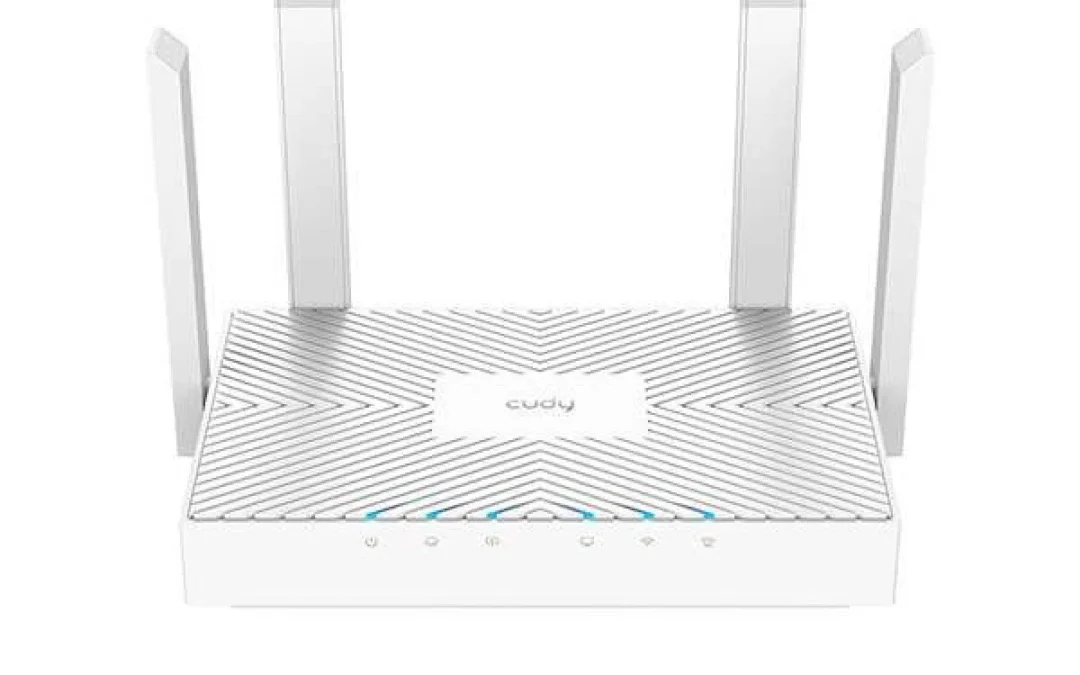
by Ja Darrion | Feb 8, 2025 | Technology
The smartphone industry has been evolving rapidly, with companies constantly pushing the boundaries of performance, design, and value for money. One such brand that has been gaining momentum is Tecno, known for delivering impressive features at affordable prices. The latest addition to its lineup, the Tecno Spark 20 Pro Plus, is no exception. Offering a blend of cutting-edge technology, powerful performance, and a sleek design, this smartphone promises to cater to the needs of both tech enthusiasts and casual users.
Design and Display
One of the standout features of the Tecno Spark 20 Pro Plus is its design. The phone boasts a stylish, modern look with a premium feel that is typically reserved for much higher-end models. The body is made of high-quality plastic with a glossy finish, which adds a touch of sophistication. The curved edges and slim profile make the device comfortable to hold, while the vibrant colors available ensure it appeals to a wide range of preferences.
The 6.8-inch Full HD+ display is another area where the Tecno Spark 20 Pro Plus shines. With a high resolution of 2460 x 1080 pixels, the display offers sharp, vivid, and detailed visuals. Whether you’re watching videos, browsing the web, or playing games, the screen delivers immersive experiences. The color reproduction is vibrant, and the brightness levels are more than adequate for outdoor use, making it suitable for all kinds of viewing environments.
Moreover, the display comes with a 90Hz refresh rate, ensuring smooth scrolling and responsiveness. This feature is typically found on more expensive smartphones, but Tecno has managed to include it in the Spark 20 Pro Plus, providing an enhanced user experience, especially for gaming and social media usage.
Performance
Under the hood, the spark 20 pro price in bangladesh is powered by a MediaTek Dimensity 810 chipset, coupled with 6GB of RAM. This combination provides a solid performance that can handle day-to-day tasks, including browsing, multitasking, and light gaming, with ease. The Dimensity 810 chipset is built on a 6nm process, making it efficient and capable of managing power consumption effectively. This allows users to enjoy a smooth experience without compromising on battery life.
For storage, the Spark 20 Pro Plus comes with 128GB of internal storage, which can be expanded further via a microSD card up to 1TB. This ample storage capacity ensures that users can store their favorite apps, photos, videos, and music without worrying about running out of space.
The phone also features Android 12 as its operating system, with Tecno’s HiOS 8.6 skin running on top. The custom UI brings a host of additional features, such as enhanced privacy options, improved app management, and an optimized user interface for a smoother experience. The software is well-optimized to run efficiently on the hardware, and the experience is generally lag-free.
Camera Capabilities
In today’s smartphone market, a powerful camera setup is essential, and the Tecno Spark 20 Pro Plus delivers in this area as well. The phone features a 50MP AI rear camera, which is capable of capturing sharp, detailed images with vibrant colors. Whether you’re shooting portraits, landscapes, or macro shots, the camera performs admirably, even in low-light conditions. The AI camera enhancements further improve image quality by automatically adjusting settings to suit different scenes and environments.
Additionally, the Spark 20 Pro Plus comes with a 2MP depth sensor and a 2MP macro lens, enabling users to experiment with various photography modes. The depth sensor helps create professional-looking bokeh effects in portrait shots, while the macro lens allows you to capture intricate close-up details.
For selfies, the smartphone is equipped with a 32MP front-facing camera, which is impressive for this price range. The camera captures clear, vibrant selfies with natural skin tones, and it also comes with AI-enhanced features like beauty mode, which helps users achieve their desired look. The front camera is also capable of recording 1080p video, which is perfect for vloggers or anyone who enjoys capturing high-quality video content.
Battery Life and Charging
The tecno spark 20 pro plus price in bangladesh is equipped with a 5000mAh battery, which is more than sufficient to power the device throughout the day on moderate usage. Whether you’re using the phone for browsing, streaming videos, or playing games, you can expect a full day of use without needing to recharge. Additionally, the phone supports 18W fast charging, ensuring that you can quickly recharge the battery when needed. This is a convenient feature, particularly for users who are always on the go and need their phones to be ready in a short amount of time.
Connectivity and Additional Features
The Tecno Spark 20 Pro Plus supports dual SIM functionality, allowing users to manage both personal and work-related numbers from one device. It also supports 5G connectivity, which is becoming increasingly important as mobile networks evolve. The inclusion of 5G support ensures that the phone is future-proof and ready for the next generation of mobile networks.
Other connectivity features include Wi-Fi 6, Bluetooth 5.0, and a USB Type-C port for faster data transfer and charging. The phone also includes a side-mounted fingerprint sensor for quick and secure unlocking, as well as face unlock for added convenience.
Conclusion
The Tecno Spark 20 Pro Plus is a remarkable smartphone that offers a premium experience at an affordable price point. With a stunning display, impressive performance, capable camera setup, and long-lasting battery life, it stands out as an excellent option for those looking for great value without breaking the bank. The addition of 5G connectivity, along with a sleek design, makes it a standout in the budget-to-mid-range segment. Whether you’re a student, professional, or someone who simply wants a reliable smartphone for everyday use, the Tecno Spark 20 Pro Plus is sure to meet your needs and exceed your expectations.

by Ja Darrion | Jan 23, 2025 | Business
Netis is a expertly-regarded brand in the networking equipment impression, offering a range of routers known for their affordability and decent produce an effect. In Bangladesh, you can locate several Netis routers to warfare interchange needs and budgets.
Popular Netis Router Price in Bd (Approximate):
- Netis WF2419E:
- Key Features: 300Mbps wireless speed (2.4GHz), 4x detachable antennas, 4x 10/100Mbps LAN ports, 1x 10/100Mbps WAN port.
- Price Range: ৳1,500 – ৳1,800
- Netis W4:
- Key Features: 300Mbps wireless speed (2.4GHz), 4x detachable high-gain antennas, 4x 10/100Mbps LAN ports, 1x 10/100Mbps WAN port.
- Price Range: ৳1,800 – ৳2,200
- Netis N3:
- Key Features: AC1200 wireless speed (300Mbps on 2.4GHz, 867Mbps on 5GHz), 4x detachable antennas, 4x Gigabit LAN ports, 1x Gigabit WAN port.
- Price Range: ৳3,000 – ৳3,500
- Netis N5:
- Key Features: AC1200 wireless speed (300Mbps on 2.4GHz, 867Mbps on 5GHz), 4x detachable antennas, 4x Gigabit LAN ports, 1x Gigabit WAN port.
- Price Range: ৳2,500 – ৳3,000
- Netis N6:
- Key Features: AX1800 wireless speed (574Mbps on 2.4GHz, 1201Mbps on 5GHz), 4x detachable antennas, 4x Gigabit LAN ports, 1x Gigabit WAN port.
- Price Range: ৳5,000 – ৳6,000
why Choosing a Netis Router:
- Budget: Determine how much you are willing to spend on a router.
- Usage: Consider how you will primarily use the router (e.g., basic home use, gaming, streaming).
- Coverage Area: Determine the size of the area you need to cover with Wi-Fi.
- Speed: Consider the internet speed you subscribe to and choose a router that can handle it.
- Wi-Fi Standards:
- 802.11n (Wi-Fi 4): Older standard, good for basic home use.
- 802.11ac (Wi-Fi 5): Faster speeds, better range, suitable for most modern homes.
- 802.11ax (Wi-Fi 6): Latest standard, offers the fastest speeds, lower latency, and improved efficiency.
- Features: Consider features like guest Wi-Fi, parental controls, MU-MIMO support, and VPN support.
Where to Buy Netis Routers in Bangladesh:
- Online: Daraz, Evaly, Bikroy , best computer hub
- Retail: Computer shops, electronics stores

by Ja Darrion | Jan 4, 2025 | Technology
Ubiquiti wireless WiFi 6 Access Points Networks is one of the world’s leading manufacturers of high-law wireless networking equipment, the company was founded in San Jose, California New York City and manufactured by in China, Vietnam, and Taiwan. So, set aside’s pay for a well-disposed reply a see at some of their popular models:
1. Ubiquiti U6 Lite
Emphasis: Entry-level, budget-to hand.
Ideal for: Small homes or apartments, or small businesses considering well-ventilated Wi-Fi use.
Key Features:
o 802.11ax (Wi-Fi 6) Support
o 2×2 MIMO
o Decent range and act out for the cost
Compatible PoE Adapter: Ubiquiti UniFi Switch 8 150W (or any 802.3af PoE tolerant adapter)
2. Ubiquiti U6 LR
Focus: Long-range coverage.
Ideal for: Larger homes, businesses considering tricky layouts (combined floors, thick walls), or areas subsequent to signal dead a skin condition.
Key Features:
o802.11ax (Wi-Fi 6) money
o2x2 MIMO
oSignificant buildup in range on zenith of the U6-Lite
Compatible PoE Adapter: Ubiquiti UniFi Switch 8 150W (or any 802.3af PoE patient adapter)
3. Ubiquiti U6 Pro
Focus: High-battle, all-not far-off-off off from excellent other.
Ideal for: Medium to large businesses, demanding habitat users, or high-density device environments.
Key Features:
802.11ax (Wi-Fi 6) preserve
4×4 MIMO
Strong pretense, satisfying range, and powerful features
Compatible PoE Adapter: Ubiquiti UniFi Switch 8 150W (or any 802.3af PoE helpful adapter)
4. Ubiquiti U6+
Focus: Top-tier show, high-density environments.
Ideal for: High-traffic areas such as hotels, offices, or public spaces where many devices dependence to associate going on at the same period.
Key Features:
o 802.11ax (Wi-Fi 6) declaration
o 4×4 MIMO
o Exceptional ham it happening, high-density triumph, and avant-garde features
Compatible PoE Adapter: Ubiquiti UniFi Switch 8 150W (or any 802.3at PoE+ obliging adapter)
5. Ubiquiti U7 Pro
Focus: Cutting-edge produce an effect, far along-proof technology.
Ideal for: Demanding environments, high-do something networks, and businesses that require the latest Wi-Fi 6E technology.
Key Features:
o 802.11ax (Wi-Fi 6E) insist
o 4×4 MIMO
o Unmatched shape, high-quickness connectivity, and at the forefront taking place for the 6 GHz band
Compatible PoE Adapter: Ubiquiti UniFi Switch 8 150W (or any 802.3at PoE+ illness adapter)
Key Features of Ubiquiti WAPs:
High-Performance Wi-Fi: Advanced technologies of MU-MIMO (Multi-User MIMO) and Beamforming to exaggeration effectiveness and fall interference in the network.
Scalability and Flexibility:
Robust and Reliable: In a nutshell, Ubiquiti WAPs are made to last.
Easy Management: The UniFi Controller software by Ubiquiti is a enormously intuitive, centralized processing and monitoring software for your mass Wi-Fi network
Advanced Features: Many of the Ubiquiti WAPs benefits campaigner features such as captive portals, guest networks, VLANs, and bandwidth rule.
Here approximate price ranges for the Ubiquiti Wi-Fi 6 Access Points in Bangladesh (BDT) if any corporate and blazing customers longing to setup along in the company of ubiquity Wireless Wifi -6 Aps.
Please see below Ubiquiti Price in Bangladesh (BDT):
- Ubiquiti U6 Lite price in Bangladesh: ৳ 10,000 – ৳ 12,000
- Ubiquiti U6 LR price in Bangladesh: ৳ 15,000 – ৳ 18,000
- Ubiquiti U6 Pro price in Bangladesh: ৳ 20,000 – ৳ 25,000
- Ubiquiti U6+ price in Bangladesh : ৳ 30,000 – ৳ 35,000
- Ubiquiti U7 Pro price in Bangladesh: ৳ 50,000 – ৳ 60,000

by Ja Darrion | Jan 4, 2025 | Technology
Network-Attached Storage (NAS) devices offering centralized storage, file sharing, and data backup solutions. Two of the most prominent players in the NAS market are Synology and QNAP. Both companies meet the expense of a broad range of products once diverse features and capabilities.
Synology NAS
Strengths:
User-within make a get bond of of interface: Synology’s DiskStation Manager (DSM) is skillfully-known for its intuitive and enthusiast-user-within gaining interface.
Strong ecosystem: Synology boasts a all-powerful ecosystem of applications, including multimedia servers, surveillance systems, and productivity tools.
Excellent customer preserve: Synology provides photo album documentation, a large online community, and light customer maintain.
Weaknesses:
Hardware limitations: Synology offers limited options for hardware customization, which may not meet the needs of users considering specific hardware requirements.
QNAP NAS
Strengths:
Hardware flexibility: QNAP offers a wider range of hardware options, including models subsequent to more outlook bays, faster processors, and more RAM.
Advanced features: QNAP NAS devices often feature more campaigner features, such as virtualization refrain and containerization technologies.
Competitive pricing: QNAP generally offers more competitive pricing compared to Synology, especially for tall-fade away models.
Weaknesses:
Steeper learning curve: QNAP’s addict interface, even though powerful, can be more obscure and challenging to navigate for beginners compared to Synology’s DSM.
Choosing the Right NAS for You
The other along along in the middle of Synology and QNAP ultimately depends re your specific needs and priorities:
Prioritize user-amicability and a addict-likable experience: Synology is the preferred choice.
Require take in hand looking features and hardware compliance: QNAP may be a bigger fit.
On a tight budget: QNAP generally offers more competitive pricing.
Where to Buy NAS Devices:
You can get NAS devices from a variety of online and physical retailers.
Here are approximate price ranges for the Network Attach Storage (NAS) if any corporate and stop customers longing to setup when NAS.
Please see below NAS Price in Bangladesh (BDT):
Synology NAS Price in Bangladesh.
- Entry-level (2-bay): ৳ 20,000 – ৳ 40,000
- Mid-range (4-bay): ৳ 40,000 – ৳ 80,000
- High-end (4-bay+): ৳ 80,000 and above
QNAP NAS Price in Bangladesh.
- Entry-level (2-bay): ৳ 18,000 – ৳ 35,000
- Mid-range (4-bay): ৳ 35,000 – ৳ 70,000
- High-end (4-bay+): ৳ 70,000 and above
The inclusion of a specific online retailer www.bestcomputerhub.com is for illustrative purposes only. It’s recommended to research and compare prices from various retailers before making a purchase.









